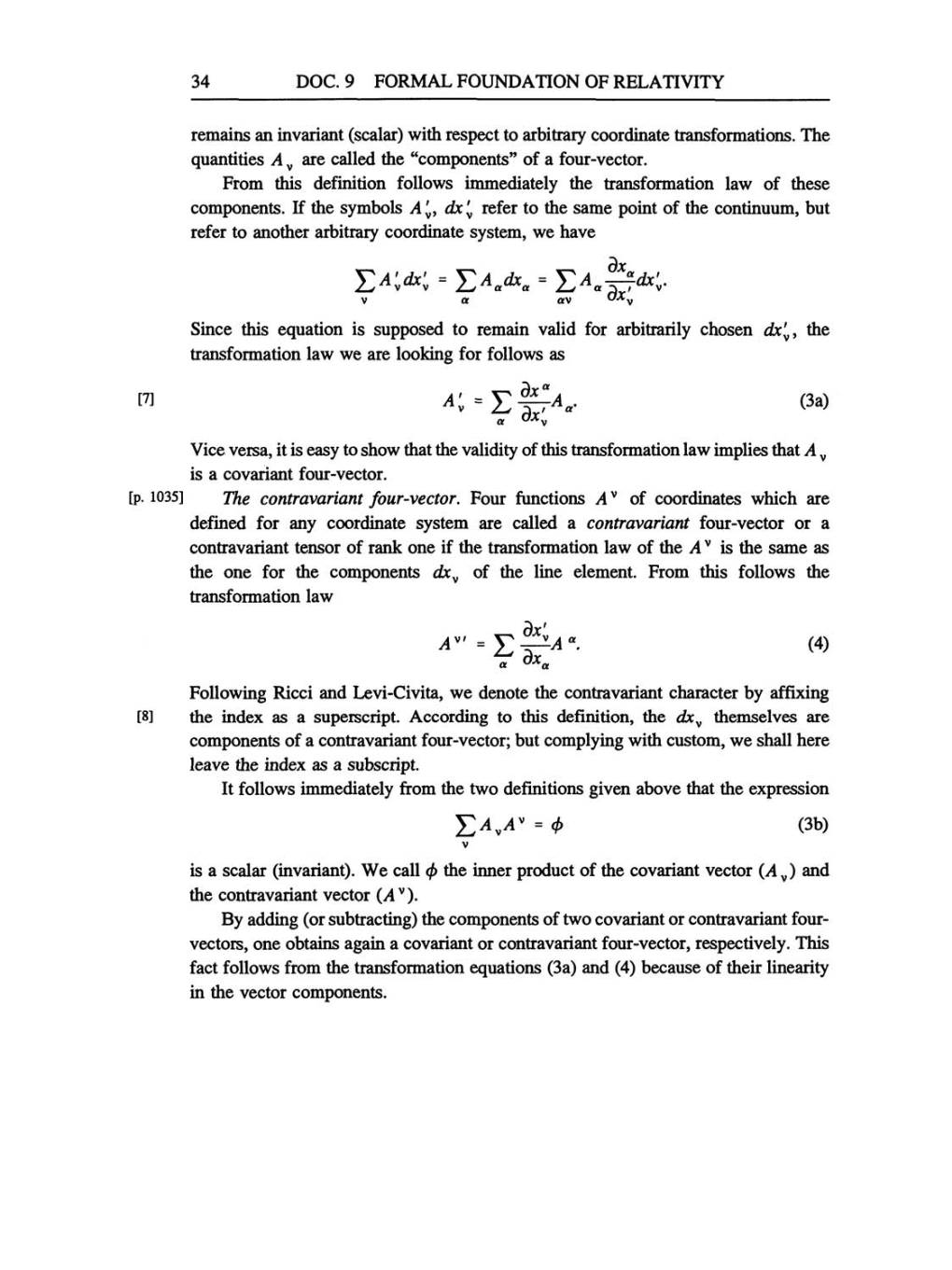34 DOC.
9 FORMAL
FOUNDATION OF RELATIVITY
remains
an
invariant
(scalar)
with
respect
to
arbitrary
coordinate transformations. The
quantities
Av
are
called
the
"components"
of
a
four-vector.
From
this definition follows
immediately
the transformation
law
of
these
components.
If
the
symbols
A'v, dx'v
refer
to
the
same point
of
the
continuum,
but
refer to another
arbitrary
coordinate
system,
we
have
dx
YA'dx'
=
YA
dxet
=
YA -^dx'.
Z-/
v
V
jL*t
a
Z-y
a
^r/
V*
v a av
Since this
equation
is
supposed
to remain valid for
arbitrarily
chosen
dx'v,
the
transformation law
we are looking
for follows
as
[7]
a:-t^ZA
a
dx'
a
(3a)
Vice
versa,
it
is
easy
to show
that
the
validity
of
this
transformation
law
implies
that
Av
is
a
covariant four-vector.
[p.
1035]
The
contravariant
four-vector.
Four functions Av of coordinates which
are
defined for
any
coordinate
system
are
called
a
contravariant
four-vector
or
a
contravariant
tensor
of
rank
one
if the transformation law of the Av
is the
same as
the
one
for the
components
dxv
of the line element. From this follows the
transformation law
Av'
=
Y^A".
cc
dxa
(4)
[8]
Following
Ricci and
Levi-Civita,
we
denote the contravariant character
by affixing
the index
as a
superscript. According
to
this
definition,
the
dxv
themselves
are
components
of
a
contravariant
four-vector;
but
complying
with
custom,
we
shall here
leave the index
as a subscript.
It follows
immediately
from the
two
definitions
given
above that the
expression
=
f
(3b)
is
a
scalar
(invariant).
We call
f
the inner
product
of
the covariant vector
(Av)
and
the contravariant vector
(Av).
By adding
(or
subtracting)
the
components
of
two
covariant
or
contravariant four-
vectors, one
obtains
again
a
covariant
or
contravariant
four-vector, respectively.
This
fact follows from the transformation
equations
(3a)
and
(4)
because
of
their
linearity
in the vector
components.
